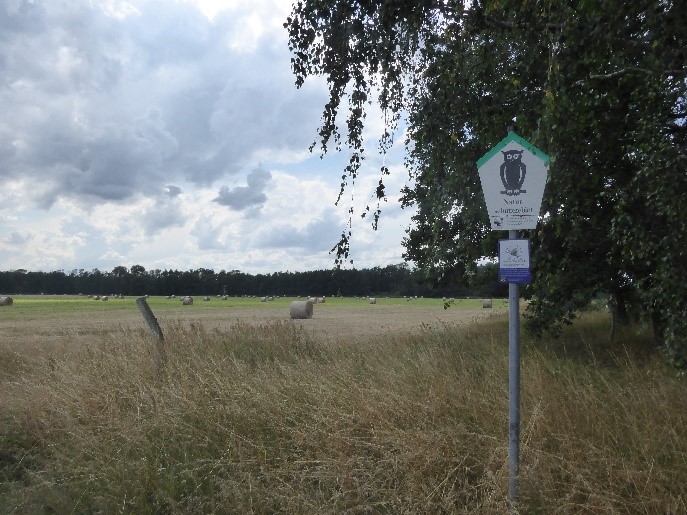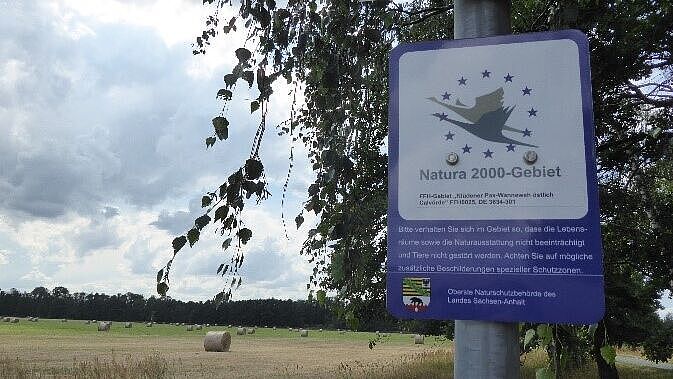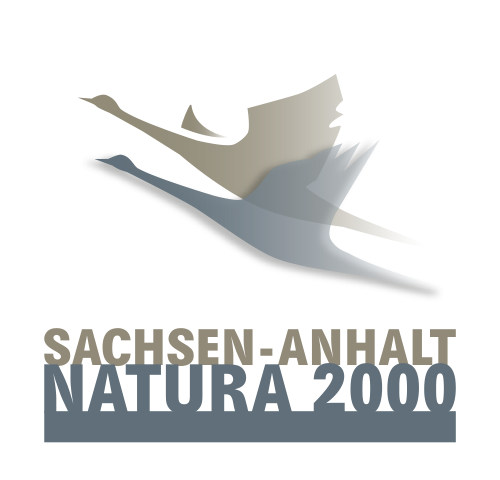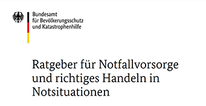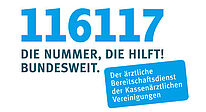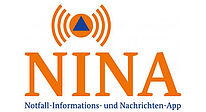Promotion of official signposting of Natura 2000 areas
Within the framework of the EAFRD funding (European Agricultural Fund for Rural Development), the district as lower nature conservation authority was granted funding in the amount of € 120,000.
Between October 2021 and September 2022, these funds will be used to officially mark the Natura 2000 sites, protected areas of bird sanctuaries and sensitive riparian areas of the Elbe River with a total of 600 signs in accordance with § 22 para. 4 BNatSchG.
Natura 2000 is characterized by an interconnected network of protected areas throughout the European Union, which has been established since 1992 on the basis of the Flora-Fauna-Habitat Directive (FFH Directive; Directive 92/43/EEC). This network is intended to ensure transnational protection of endangered wild animal and plant species and their natural habitats.
The signs are to be erected selectively at the access points to the protected areas.
According to § 22 paragraph 4 BNatSchG (Federal Nature Conservation Act), protected parts of nature and landscape are to be registered and marked. The owners of the affected properties must tolerate these measures insofar as their use is not unreasonably impaired (Section 65 (1) BNatSchG). Coordination with the owners on the specific locations of the signs is planned.
The signage will make the protected areas recognizable, giving everyone the opportunity to inform themselves and to comply with the relevant regulations or to adapt their behavior, thus making a significant contribution to improving the conservation status of the areas.
Another goal is to inform the population about the Natura 2000 protected area landscape and the protection status of species and habitat types.
In the Börde district, for example, Natura 2000 sites have been designated for habitat types according to Annex I of the Habitats Directive, such as Burning Umbel Floodplain Meadows (6640, Cnidion dubii), forest habitat types, such as Sub-Atlantic or Central European Oak Forest (6190, Carpinion betuli) or inland salt marshes (*1340). Annex 2 of the Habitats Directive additionally lists animal and plant species of Community interest for whose conservation special protection areas had to be designated. These include otter(Lutra lutra), beaver(Castor fiber albicus), field hamster(Cricetus cricetus), pug bat(Barbastella barbastellus ) or the red kite(Milvus milvus) as a species according to Annex I of the Birds Directive.
Last but not least, the aim is to achieve greater acceptance and awareness of the Natura 2000 protected area landscape and thus more effective protection of the areas.
Förderung für die Erstellung und Aufstellung von Informationstafeln an häufig genutzten Zugängen von Natura 2000-Gebieten
Im Rahmen der ELER-Förderung (Europäischer Landwirtschaftsfond für die Entwicklung des ländlichen Raumes) wurden dem Landkreis Börde als untere Naturschutzbehörde Fördermittel in der Höhe von etwas mehr als 180.000,- € bewilligt.
Mit diesen Mitteln sollen in den Jahren 2023 und 2024 insgesamt bis zu 97 Informationstafeln an häufig genutzten Wegen in und entlang der Natura 2000 - Gebietskulisse im Landkreis Börde aufgestellt werden.
Natura 2000 zeichnet sich durch ein miteinander verknüpftes Netz von Schutzgebieten in der gesamten Europäischen Union aus, welches seit 1992 auf der Grundlage der Fauna-Flora-Habitat-Richtlinie (FFH-Richtlinie/ RL 92/43/EWG) errichtet wurde. Zusammen mit der Vogelschutzrichtlinie vom 30.11.2009 sollen so europaweit gefährdete wildlebende Tier- und Pflanzenarten sowie ihrer natürlichen Lebensräume erhalten und wiederhergestellt werden.
Informationstafeln sollen nun individuell und in der Zusammenarbeit mit ortskundigen Naturschutzbeauftragten, Verbänden und Flächennutzern designt werden. Betroffene Grundstückseigentümer werden vor der Umsetzung über das Vorhaben informiert und nach deren Zustimmung werden die Informationstafeln abschnittsweise mit Holzgestellen an häufig genutzten Zugängen zu insgesamt 16 FFH- und zu drei Vogelschutzgebieten errichtet.
Naturinteressierten Bürgern und Bürgerinnen wird durch Beschreibungen, Bildern und Karten die Erschließung der wertvollen Schutzgebiete ermöglicht und so die Naherholungsmöglichkeiten der Umgebung bereichert. Auch Kindern soll durch „Fun Facts“, Spielvorschläge und kindgerechte Darstellungen der besondere Schutzzweck des Gebietes begreifbar gemacht werden. Dabei dienen die Informationstafeln auch dazu, Naturtourismus sinnvoll zu lenken und so eine Beeinträchtigung sensibler Bereiche zu vermeiden.
Auch wenn die Informationstafeln nur punktuell an häufig genutzten Zugängen platziert werden, haben sie durch ihre öffentliche Wahrnehmung und Sensibilisierung der Besucher zum naturverträglichen Verhalten doch eine weitreichende Wirkung auf die kompletten Schutzgebiete mit ihren jeweiligen Schutzzwecken.
Das Vorhandensein und die Lage des Schutzgebietes kann besser erkannt werden, es wird auf die vielfältigen vertretenen Arten und Lebensräume aufmerksam gemacht und so auch eine Akzeptanz für die notwendigen Regelungen zum Schutz erreicht.
Im Landkreis Börde beispielsweise wurden Natura 2000-Gebiete zum Schutz der Lebensraumtypen Brenndolden-Auenwiese, subatlantischer oder mitteleuropäische Stieleichenwald und Salzwiesen
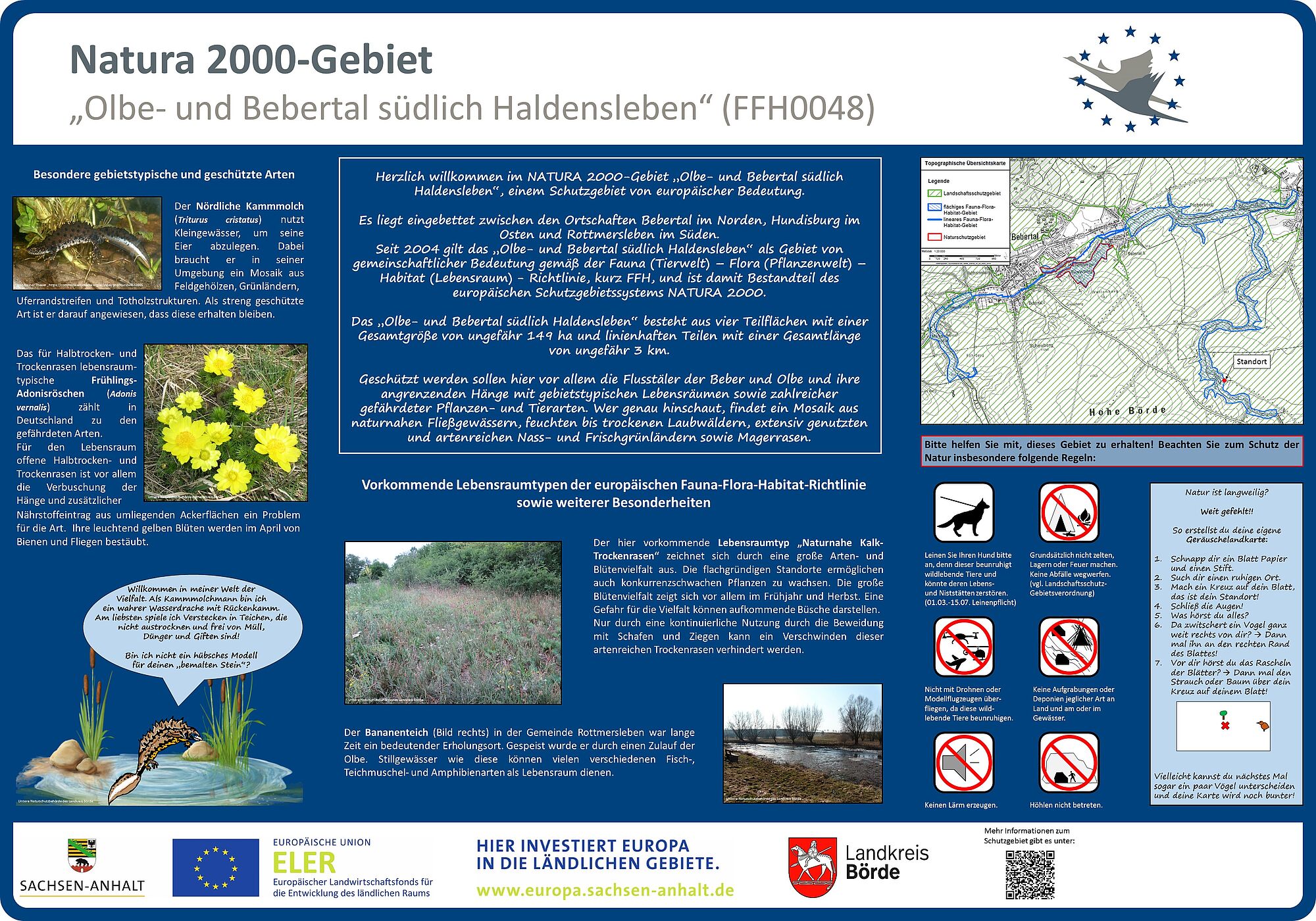
© Landkreis Börde
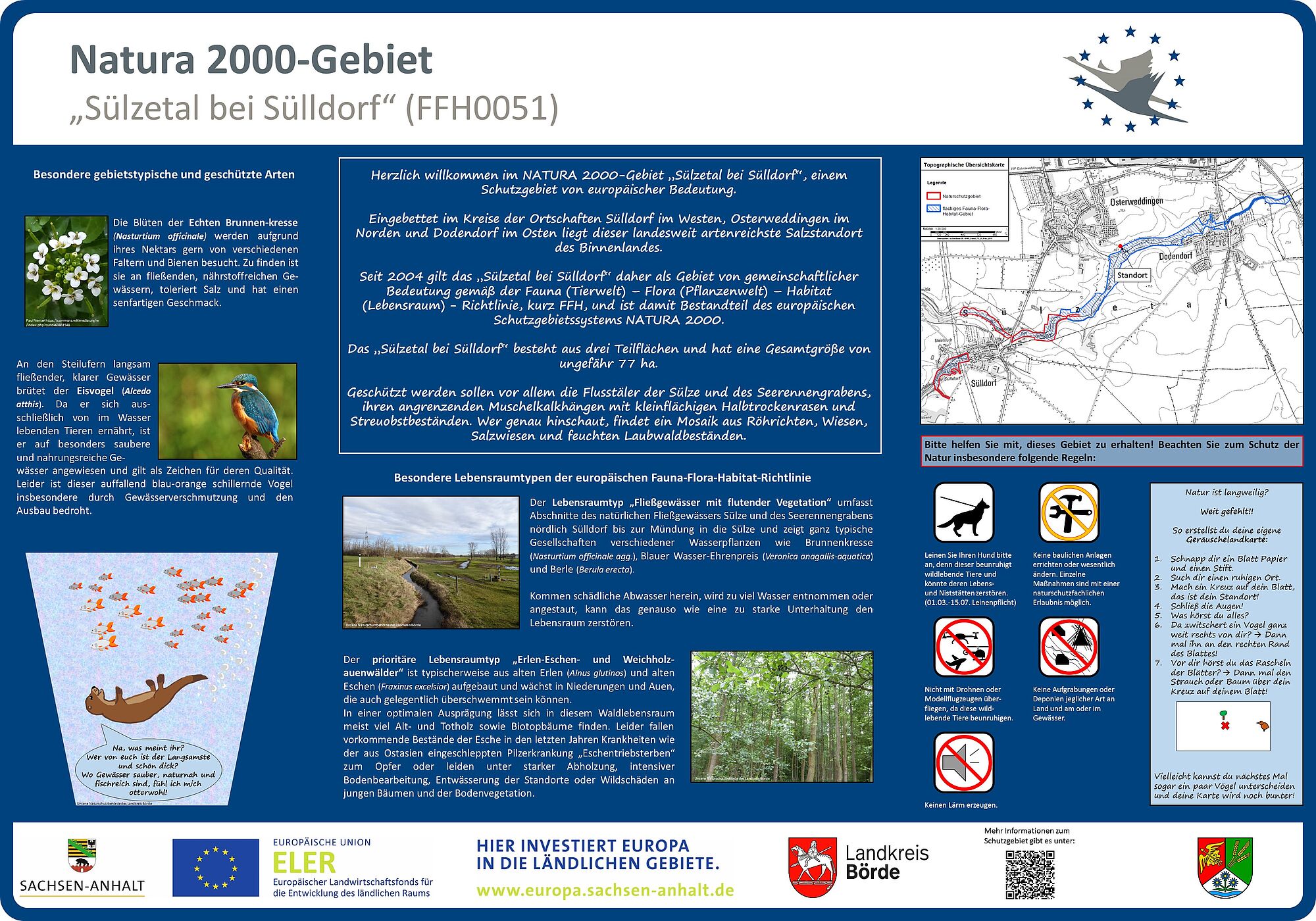
© Landkreis Börde
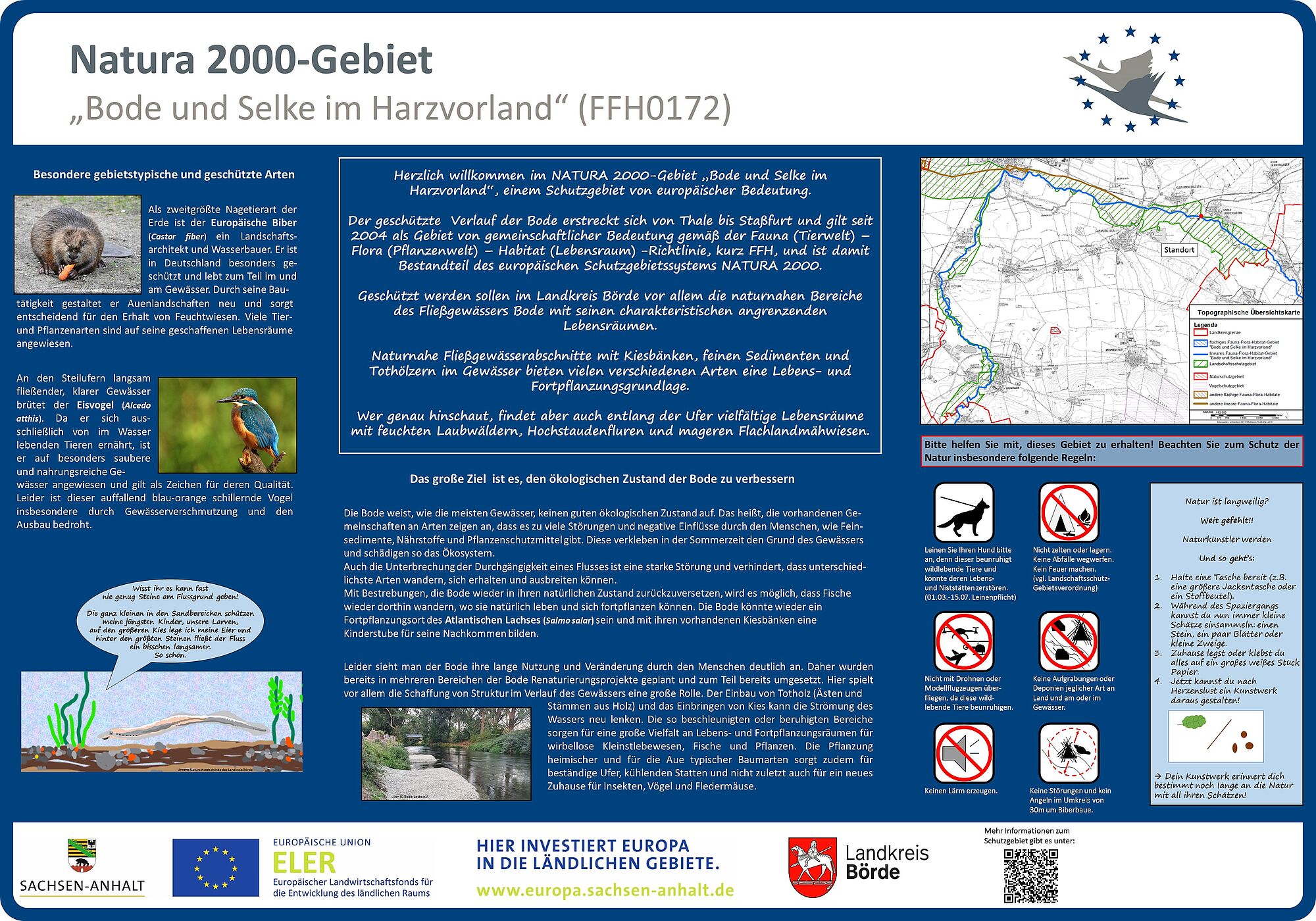
© Landkreis Börde
